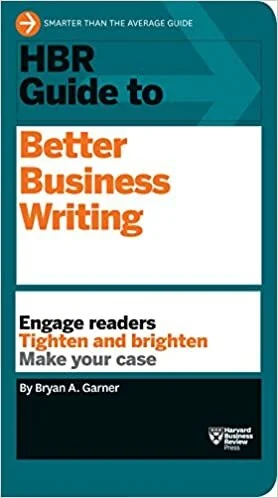A Structured Approach to Business Writing
Written by
Olga Grynenko
Software Engineer - Experimentation Platform, Grammarly
WEST Mentee
Have you ever felt reluctant to do something because you didn’t know how to start? How often do you get this feeling when you have to write an important document or email?
Writer’s block is no joke when you are staring at a blank page trying to imagine a complete piece, and it makes the challenge in front of you feel overwhelming. I’ve been there myself, and I have great news for you—overcoming writer’s block is a skill that you can learn, and there are many resources to help you in this process. You just need to find the right tool: one that’s easy to remember and apply in any situation.
For me, such a tool was the structured approach to business writing described in the “HBR: Guide to Better Business Writing” by Bryan A. Garner. I rely on it every day when writing anything, from a quick note to my coworker to a team-wide design document. In this blog post, I briefly summarize the key principles of this approach.
Before you even get to the act of writing, you need to know why you are writing and understand your audience.
Your readers may have little or no prior knowledge about the topic at hand, but assume they are intelligent people. Keeping your purpose and your audience in mind will help you tailor the level of detail and the tone of your message to achieve the desired results.
Once you are ready to get to writing, it is too early to think about the finished product yet. Don’t try to picture the completed piece before you’ve gathered and organized your material. Instead, break up your work into four smaller tasks. You can imagine them belonging to four different characters in your brain, representing the phases the writer should go through when writing a piece: Madman, Architect, Carpenter, and Judge.
Madman is responsible for brainstorming and gathering the material. Remember: There are no bad ideas during brainstorming! Keep links to the sources as they may be helpful later and give credit where it is due.
Architect organizes the material to create an outline, however simple. During this phase, you generate the list of topics to cover and develop each of them into a complete sentence, arrange them in sets of three, and order them from the standpoint of what’s most logical for your readers.
Carpenter puts your thoughts into words and lays out sentences and paragraphs according to the Architect’s plan. The main goal of this phase is to write your first draft as quickly as you can. Don’t wait for inspiration; schedule time to write and honor it. After going through the first two phases, you should have enough information and structure to be productive and get right at it. Start from covering the part you feel most comfortable addressing, then move on to the next part—you can always come back later. If you feel stuck, try to think aloud to yourself or talk to someone about what you are trying to convey.
Judge revises and edits your piece. Take your time to look at your piece as a whole. Think about its content and structure. Allow for enough time to revise and edit, at least as much as you spent researching and writing. Have multiple rounds of editing focusing on one element of writing at a time: tone, grammar, formatting, etc.
Be prepared to go back and forth between these phases. It may happen that, while drafting, you realize that you need more data and would go back to hunting and gathering. Or, while editing, you decide to reorganize your points and change the outline to add more structure. Just trust the process and make sure you go through each of the phases.
I highly recommend reading the “HBR: Guide to Better Business Writing” by Bryan A. Garner to everyone who struggles with writer’s block. This book is written according to the rules and advice it preaches and has many actionable examples and detailed explanations. And it is an excellent example of high-quality business writing in itself!
Watch Olga’s presentation on Business Writing below:
Additional resources:




![Know Thyself: 3 Ways to Identify Your Strengths [Video]](https://images.squarespace-cdn.com/content/v1/58180e88f7e0ab31b49cb69f/1628184683739-CUBHFFXISCKYZ4YI7KEN/Banner_Anagha.png)
